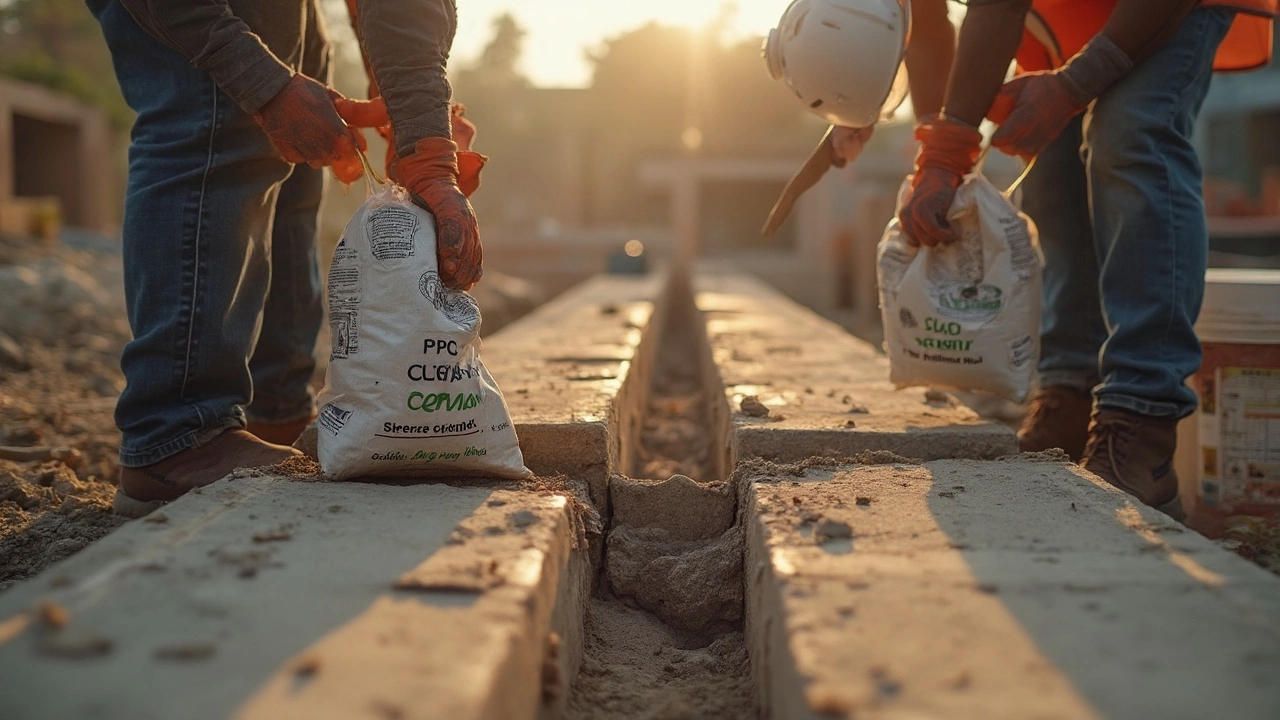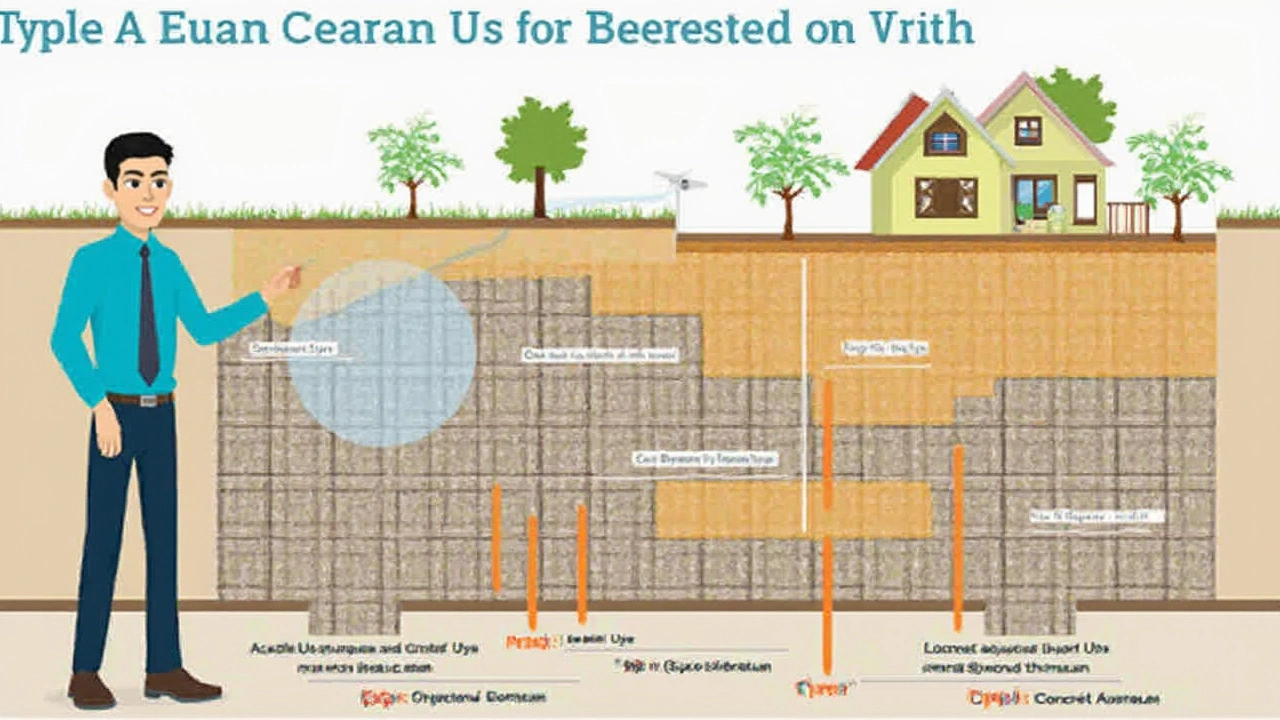Best Cement for Foundation Repair: Expert Guide and Tips

When a house starts to settle or cracks creep along the basement wall, most people panic about the foundation. But did you know foundation issues are a top reason homes lose value? Pick the wrong cement mix, and you could be dealing with new cracks, water leaks, or even a sinking house. Home repairs love drama, and foundation problems are the main act. Cement isn’t all the same. Use the wrong one, and you may have to do the job twice, costing you stacks of money and sleep. If you’re tired of endless advice and want solid answers, you’re in the right place.
How Cement Types Affect Foundation Repairs
Not all cement is equal—especially for something as serious as fixing your home’s foundation. Walk into a hardware store, and you’ll see regular Portland cement, high-strength concrete, fast-setting mixes, and polymer-modified formulas. Think of them as tools for different jobs, even though they all look like dusty gray powder in the bag.
Portland cement is everywhere because it’s reliable and relatively cheap. The standard Portland blend (usually labeled Type I or Type II) does the trick for most minor repairs. But when you’re patching wider cracks or reinforcing big sections, you want something tougher, like a high-strength structural concrete mix. This kind has extra cement, plus stronger aggregate (those little rocky bits inside), raising its compressive strength to levels regular cement can’t match. The PSI (pounds per square inch) rating tells you how much the cured mix can withstand. Typical Portland cement might sport a PSI around 2,500 to 3,000, but some repair mixes hit 5,000 PSI or more. Want numbers? The American Concrete Institute (ACI) says that repairs involving rebar (steel reinforcement) should use a mix with at least 4,000 PSI for best results.
Fast-drying cement can be tempting, especially if you hate waiting for repairs to set. But here’s the catch: fast-setting mixes usually aren’t as strong long-term, and they’re unforgiving if you mess up the timing. Delay smoothing it out, and you’ll end up chiseling lumps. Polymer-modified concrete takes regular cement and juices it up with synthetic polymers (think stretchy glue), making the mix more flexible and water-resistant. This is great when you’re dealing with hairline cracks or want extra waterproofing—like reinforcing foundations in wet or flood-prone areas.
Look at it this way: if you’re patching a tiny crack in a dry area, a simple acrylic patch may do. But for big structural patches, floors, or damp basements, you should think twice before grabbing the cheapest bag at the store. Here’s a quick comparison:
| Type of Cement Mix | Typical PSI | Best Use |
|---|---|---|
| Standard Portland Cement | 2,500–3,500 | General repairs, thin cracks |
| High-Strength Concrete | 4,000–5,000+ | Structural repairs, large patches |
| Fast-Setting Cement | 3,000–4,000 | Small, urgent repairs |
| Polymer-Modified Cement | 3,000–5,000+ | Waterproof repairs, flexible needs |
Choosing the right type is about balancing speed, strength, moisture, and project size. Ignore this, and your repair could fail before your next barbecue.
Choosing the Best Cement for Your Foundation’s Situation
Picking a cement mix isn’t a random toss-up. A lot depends on your foundation’s current shape and what it has to face every year. First, figure out how serious the damage is. Fine hairline cracks (less than 1/16-inch) that don’t shift aren’t usually holding back structural pressure. For these, flexible or polymer-based repair cements are ideal. Brands like Quikrete make crack fillers that squeeze into the gap, stick well, and flex a bit when seasons change.
However, those ugly, wider cracks—especially if you can poke a dime into them—are a different beast. In many U.S. states, foundation cracks go hand in hand with freezing winters or spring floods. If water can sneak through, it’ll freeze and expand, making small cracks into major headaches. For these jobs, a high-strength, low-shrink cement mix is best. Most pros like those with a compressive strength above 4,500 PSI and that specifically mention “foundation repair” or “structural patch” on the label. Products like Sakrete’s High-Strength Concrete Mix or QUIKRETE 5000 are favorites because they resist compression, and they don’t shrink or crack as they cure.
Sometimes foundations aren’t just cracked—they’re crumbling. If the old cement is flaking away or you see loose stones in your basement wall, you need a product that can anchor new cement to old surfaces. In that case, a polymer-modified cement mix is your friend. The polymers act like glue, helping the new mix grab onto dusty, uneven, or damp old concrete.
Areas with high groundwater or a lot of rain add another challenge. Here, water-resistant cements—those with built-in waterproofing agents and flexible polymers—are crucial. If you live somewhere that gets soaked every spring (these are the folks in the Pacific Northwest or parts of the Gulf Coast), look for repair cements labeled as “hydraulic” or “waterproofing.” Hydraulic cement brands like Basalite or Rapid Set are popular because they expand slightly as they set, sealing out leaks. They’re so waterproof, plumbers use them to plug holes in active leaks. Not a bad trick if you want to keep your basement dry during spring floods!
Don’t forget what’s beneath your foundation. If your soil is sandy and always shifting, or you’ve dealt with sinking floors before, consider mixes that are both high-strength and a bit flexible. Your best move is picking a cement mix designed for footings or slab patching with a reinforced mesh or rebar. Here’s something most people miss: local climate matters. In icy places, always check if the mix is labeled as “freeze/thaw resistant.” If not, you risk having repairs break apart within a year or two of harsh winters.
So, the best cement for foundation repair isn’t some secret brand—it’s matching the right type to your home’s needs, climate, and the size of the crack. Take five minutes to study what your foundation is facing, and you’ll save yourself a lot of trouble down the line.

Mixing, Applying, and Curing: Getting It Right Matters
You can buy the fanciest cement on the shelf, but if you mix or apply it wrong, it won’t matter. The best mix in the world can become the worst patch job if you skip a few steps. Mixing foundation repair cement isn’t hard, but a lot of people get lazy and pay for it later. Always follow the water ratio printed on the bag. Too much water makes the finished patch weak and crumbly. Too little, and it won’t bond deeply into the crack or old surface. Did you know that even a small extra cup of water can lower your cement’s strength by up to 40%? That’s straight from the Portland Cement Association’s field handbook.
Before you start mixing, prep the repair site. Chip away loose or weak concrete, then brush or blow away the dust. If you’re filling big cracks or wide joints, undercutting (making the bottom wider than the top) helps the new cement lock in place, like a wedge. For hairline cracks, open them up a bit with a chisel or angle grinder, so the repair mix has something to grab onto. Soak the area with water before applying the new mix—this keeps the old cement from sucking out all the water from your fresh patch too quickly, which can cause cracks or weak bonds.
Apply your cement mix using a margin trowel for small repairs, or a finishing trowel for big patches. Pack it in firmly, and smooth the surface to match the old concrete. Drying too fast is a big enemy here. Cover the repair with plastic sheeting or wet burlap for at least 24–48 hours (a process called ‘moist curing’). This slows the evaporation and helps the cement reach its full strength. Some pros say moist curing can boost repair strength by 30% compared to patches left to dry in the sun.
If you’re using a fast-setting or hydraulic cement, remember the clock’s ticking. These mixes can set in 5–15 minutes, so have everything ready before you add water. For deep cracks or structural repairs, build up the patch in thin layers, waiting for each one to start hardening before adding more. This keeps the patch from sagging or trapping air pockets inside.
The biggest tip: use safety gear. Cement and concrete dust can irritate your eyes, skin, and lungs. Nitrile gloves, a dust mask, and goggles can save you from days of burning hands and sneezing fits.
For larger repairs—like replacing sections of the foundation wall—always use rebar or metal mesh to strengthen the fresh cement. Bend the rebar into the old crack or use epoxy anchors to fix it into place. Pour the cement mix in around the rebar and tap with a hammer (or use a vibrating tool) to remove air pockets.
Here are a few more pro tips:
- Never patch foundation cracks during a downpour or freezing spell. Moisture or ice will ruin the bond.
- Seal the finished repair with a concrete sealer or paint for extra protection from water and salt.
- If you notice new cracks forming nearby, investigate the real reason: shifting soil, tree roots, or plumbing leaks might be hiding beneath.
Common Mistakes, Pro Tips, and When to Call for Help
Foundation repairs are a DIY favorite until something goes sideways. The biggest mistake people make? Skipping the right prep work. Skip cleaning out crack debris, and your fancy repair cement will pop off with the next frost. If your patch doesn’t bond, you risk water leaks, continued settling, or ugly new cracks appearing next year.
Some folks grab whatever is on sale, slather it on, and hope for the best. Sounds tempting, right? But if you use a cheap, weak, or wrong mix, you just wasted time and money. Weak cement cracks, especially in foundations with lots of movement or moisture. Stay away from regular mortar, stucco, or non-structural patching products—these are made for above-ground walls or interiors, not ground-hugging, load-bearing foundations. About a third of failed DIY repairs happen because the wrong product was used.
Overwatering the mix, not letting it cure, or sealing it too late are other big blunders. You might also see repairs bulging or falling out if you apply cement too thick in a single go or on damp, unprepared surfaces. Don’t forget to address the bigger issue causing the cracks—a patch is a waste if the soil still sinks or tree roots keep pushing against the wall.
Here’s a quick set of pro moves:
- Always match your cement mix to the climate and severity of the crack.
- Use an angle grinder with a diamond wheel to open up cracks for better filler grip.
- Bonding primer or adhesive helps new cement stick like glue, especially for wall repairs.
- Buy a little extra mix. Running short halfway means you risk a weak cold joint where the two mixes meet.
- Keep kids and pets out of the repair zone for at least 2–3 days after you’re done.
If repairs keep failing or cracks keep coming back, don’t be embarrassed to call a foundation specialist. Some problems—like shifting footings or big horizontal cracks—need expert engineering (or heavy machinery). National Association of Home Builders data from 2023 showed that about 20% of all residential foundation repairs needed a specialist’s touch due to underlying soil or drainage issues. Better safe than having to jack up your house twice!
So, next time you stare at that stubborn crack, remember: matching the best cement for foundation repair to your problem isn’t just about picking a bag off the shelf. It means looking at the whole picture—foundation health, climate, moisture, and future movement. Give your home the support it deserves, and you’ll buy yourself years of solid peace of mind.
Write a comment